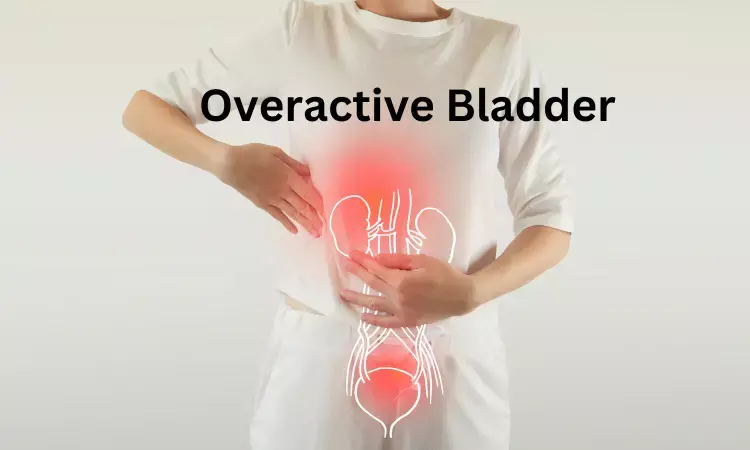- Home
- Medical news & Guidelines
- Anesthesiology
- Cardiology and CTVS
- Critical Care
- Dentistry
- Dermatology
- Diabetes and Endocrinology
- ENT
- Gastroenterology
- Medicine
- Nephrology
- Neurology
- Obstretics-Gynaecology
- Oncology
- Ophthalmology
- Orthopaedics
- Pediatrics-Neonatology
- Psychiatry
- Pulmonology
- Radiology
- Surgery
- Urology
- Laboratory Medicine
- Diet
- Nursing
- Paramedical
- Physiotherapy
- Health news
- Fact Check
- Bone Health Fact Check
- Brain Health Fact Check
- Cancer Related Fact Check
- Child Care Fact Check
- Dental and oral health fact check
- Diabetes and metabolic health fact check
- Diet and Nutrition Fact Check
- Eye and ENT Care Fact Check
- Fitness fact check
- Gut health fact check
- Heart health fact check
- Kidney health fact check
- Medical education fact check
- Men's health fact check
- Respiratory fact check
- Skin and hair care fact check
- Vaccine and Immunization fact check
- Women's health fact check
- AYUSH
- State News
- Andaman and Nicobar Islands
- Andhra Pradesh
- Arunachal Pradesh
- Assam
- Bihar
- Chandigarh
- Chattisgarh
- Dadra and Nagar Haveli
- Daman and Diu
- Delhi
- Goa
- Gujarat
- Haryana
- Himachal Pradesh
- Jammu & Kashmir
- Jharkhand
- Karnataka
- Kerala
- Ladakh
- Lakshadweep
- Madhya Pradesh
- Maharashtra
- Manipur
- Meghalaya
- Mizoram
- Nagaland
- Odisha
- Puducherry
- Punjab
- Rajasthan
- Sikkim
- Tamil Nadu
- Telangana
- Tripura
- Uttar Pradesh
- Uttrakhand
- West Bengal
- Medical Education
- Industry
Overactive Bladder Strongly Linked to Sarcopenia in Older Adults, finds study

A new study has found that older individuals with overactive bladder (OAB) were significantly more likely to have sarcopenia, a disease characterized by muscle weakness and reduced physical function. The study was published in the International Journal of Urology by Suguru Ito and colleagues..
OAB is one of the conditions prevalent in the elderly, with frequent micturition, urgency, and incontinence, whereas sarcopenia is a loss of strength and function of the muscles. It is imperative that one appreciates the relationship between these two conditions since both are linked to an increased risk of falls, decreased mobility, and poor quality of life. This study is the first to investigate the association between OAB and sarcopenia with the use of validated screening measures within a large population-based sample.
The study employed a questionnaire-based, population-based design to enroll older adults living in various parts of Yamagata Prefecture, Japan. Data were gathered between 2021 and 2022 using two validated screening measures:
Overactive Bladder Symptom Score (OABSS): A survey that evaluates OAB symptom severity, such as frequency, nocturia, urgency, and urinary incontinence.
Strength, Walk Assistance, Rise from Chair, Climb Stairs, and Falls (SARC-F): Sarcopenia screening, measuring muscle strength, mobility, and falls risk.
Study Population:
• Total responses: 9,008 (3,798 men, 5,210 women).
• Median age: 74 years.
• Inclusion criteria: ≥65 years old, fully completed questionnaires.
Definitions:
• OAB: Defined by International Continence Society criteria, as per OABSS scores.
• Sarcopenia: Defined by the SARC-F questionnaire, which evaluates physical function and mobility.
Key Findings
Prevalence of OAB and Sarcopenia:
• OAB occurred in 27% of subjects (34% in men, 23% in women, p < 0.001).
• Sarcopenia occurred in 12% of subjects, with a greater prevalence in women (13%) than men (10%) (p < 0.001).
Association Between OAB and Sarcopenia:
• In univariable analysis, OAB was significantly related to all items of SARC-F, which shows a robust relationship between symptoms of the bladder and decreased muscle function.
• All items of OABSS were also related to sarcopenia, showing a two-way correlation between the two conditions.
Multivariable Analysis Results:
• In multivariable analysis, controlling for age and sex, OAB was still significantly related to all items of SARC-F except "assistance with walking."
• Sarcopenia was related to all items of OABSS except "frequency."
• Falls were highly correlated with the OABSS items "nocturia" and "urgency urinary incontinence (UUI)," showing increased fall risk in these patients.
The study authors showed a significant association between OAB and sarcopenia among older adults with a particularly higher risk of falls in those having nocturia and urgency urinary incontinence (UUI). These results suggest the need for combined screening and targeted interventions for both conditions in order to ensure improved health outcomes among older adults.
Reference:
Dr Riya Dave has completed dentistry from Gujarat University in 2022. She is a dentist and accomplished medical and scientific writer known for her commitment to bridging the gap between clinical expertise and accessible healthcare information. She has been actively involved in writing blogs related to health and wellness.
Dr Kamal Kant Kohli-MBBS, DTCD- a chest specialist with more than 30 years of practice and a flair for writing clinical articles, Dr Kamal Kant Kohli joined Medical Dialogues as a Chief Editor of Medical News. Besides writing articles, as an editor, he proofreads and verifies all the medical content published on Medical Dialogues including those coming from journals, studies,medical conferences,guidelines etc. Email: drkohli@medicaldialogues.in. Contact no. 011-43720751


